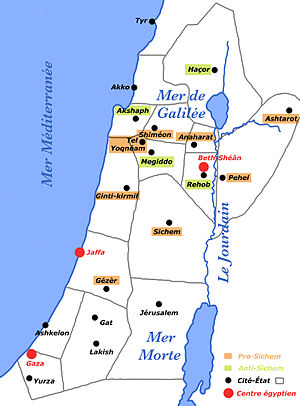Canaanites

Canaan is considered to be the coast and interior of the eastern Mediterranean, the Canaanites were a people lived in what is now Lebanon and Israel, and parts of Syria and Jordan. According to the Bible, the ancient Canaanites, were idol worshipers who practiced human sacrifice and engaged in deviant sexual activity. They reportedly conducted human sacrifices in which children were immolated in front of their parents on stone altars, known as Tophets, dedicated to the mysterious dark god Moloch.
Canaan was a Semitic-speaking civilization and region in the Ancient Near East during the late 2nd millennium BC. Canaan had significant geopolitical importance in the Late Bronze Age Amarna Period (14th century BC) as the area where the spheres of interest of the Egyptian, Hittite, Mitanni and Assyrian Empires converged or overlapped. Much of present-day knowledge about Canaan stems from archaeological excavation in this area at sites such as Tel Hazor, Tel Megiddo, En Esur, and Gezer.
The name "Canaan" appears throughout the Bible, where it corresponds to "the Levant", in particular to the areas of the Southern Levant that provide the main settings of the narratives of the Bible: the Land of Israel, Philistia, and Phoenicia, among others.
The word Canaanites serves as an ethnic catch-all term covering various indigenous populations—both settled and nomadic-pastoral groups—throughout the regions of the southern Levant or Canaan. It is by far the most frequently used ethnic term in the Bible. The Book of Joshua includes Canaanites in a list of nations to exterminate, and scripture elsewhere portrays them as a group which the Israelites had annihilated. Biblical scholar Mark Smith notes that archaeological data suggests "that the Israelite culture largely overlapped with and derived from Canaanite culture... In short, Israelite culture was largely Canaanite in nature. The name Canaanites is attested, many centuries later, as the endonym of the people later known to the Ancient Greeks from c. 500 BC as Phoenicians, and after the emigration of some Canaanite-speakers to Carthage (founded in the 9th century BC), was also used as a self-designation by the Punics (as "Chanani") of North Africa during Late Antiquity.[2]
Carthage Influence on Malta
There are impactful historical events in the timelines that connect the blood sacrifice teachings of the Canaanites from Carthage as infiltrating the Maltese island culture, which later formed into the legacies which include the Knights of Malta. The Canaanites left their indelible imprint when a group of ancient satanic priests from Carthage, who worshipped Baal and Moloch through child blood sacrifices, came to the island and began to use the many catacombs, tunnels and underground structures for inverting goddess worship by carrying out their covert satanic blood rituals. The subterranean passages and caverns span the entire island and were intersecting with the catacombs beneath Rome which were siphoning the spiritual power of the Mother Goddess principle. Malta’s temples, catacombs, caves and tunnels were specifically built upon powerful intersecting Dragon nodes and portal systems that also have connections into the Albion controls in the United Kingdom, and these intelligent systems were genetically coded into the Dragon Templar originally built and placed there by the Emerald Order Founders.[3]

